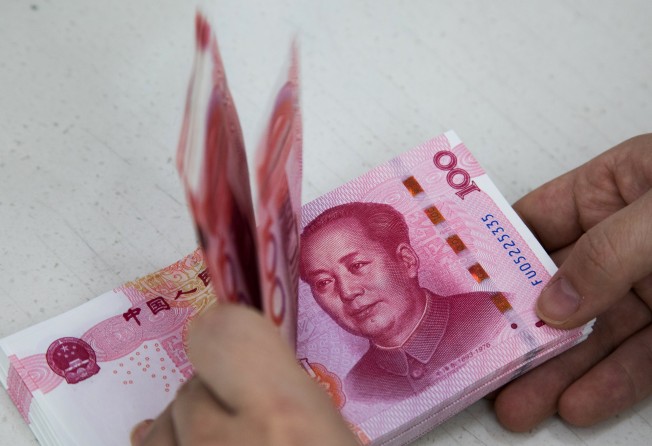Yuan set for biggest weekly gain in 12 years; Hong Kong dollar surges

China’s yuan surged on Friday, set for its biggest weekly gain in 12 years, as a slide in the US dollar triggered repatriation of funds back to the mainland by real money investors. Hong Kong’s dollar climbed in tandem with the yuan.
Onshore yuan rose 0.82 per cent, breaking a key 6.45 resistance level to 6.4398 per dollar, which is its strongest since December 2015. It is poised for a weekly gain of 1.82 per cent, the biggest increase since July 2005. Offshore yuan advanced 0.42 per cent to 6.4590 per dollar, also the highest since December 2015.
“The offshore yuan market is crazy today, and we are really heading into unchartered territory,” said Stephen Innes, head of trading Asia Pacific at Oanda. “Real money is likely being repatriated back into China, and the central bank is not stepping in to stop this.”
Real money refers to actual cash being traded by investors, as opposed to money borrowed by the likes of hedge funds to speculate in the market.
Early on Friday, the People’s Bank of China raised the daily yuan reference rate by 0.36 per cent to 6.5032 per dollar. That was lower than expected, given the overnight move in the dollar and other major currencies, indicating an intention by the central bank to cool down bullish yuan market sentiment, said Ken Cheung, senior Asian foreign exchange strategist at Mizuho Bank.
Yuan expectations reversed sharply from depreciation in the past month or so after a string of robust Chinese economic data and as the currency appeared to function as a regional safe-haven asset amid rising geopolitical risks after North Korea’s recent nuclear test.
Data on Thursday showed China’s foreign exchange reserves rose by nearly US$11 billion to US$3.09 trillion at the end of August, the highest level since October.
Meanwhile, fading expectations that the US Federal Reserve will raise interest rates was also causing the dollar to decline while boosting the yuan and other Asian currencies.
Three Fed policymakers this week expressed doubt about further rate increases, cautioning against slow inflation while overnight data showed a jump in US jobless data to a more than two-year high amid a surge in applications in hurricane-ravaged Texas.
Innes said the yuan may continue to rise toward 6.40 against the dollar because several major resistance levels have been breached.
Hong Kong’s dollar climbed for a second day on Friday, sharply pulling away from the 7.85 weak side convertibility undertaking close to which it had been trading in recent weeks. Under the linked exchange rate system, the HKMA is obliged to prevent the currency from breaching either side of a trading band that ranges between 7.75 and 7.85.
On Friday, the local currency rose by as much as 0.25 per cent, the most since January 2016, to an intraday high of 7.7936 per dollar before subsequently falling back to 7.8007.
Hong Kong’s dollar was likely to have been boosted by a by sizeable amount of capital being moved into Hong Kong dollars, which triggered stop-loss positions in the currency market, Mizuho’s Cheung said.